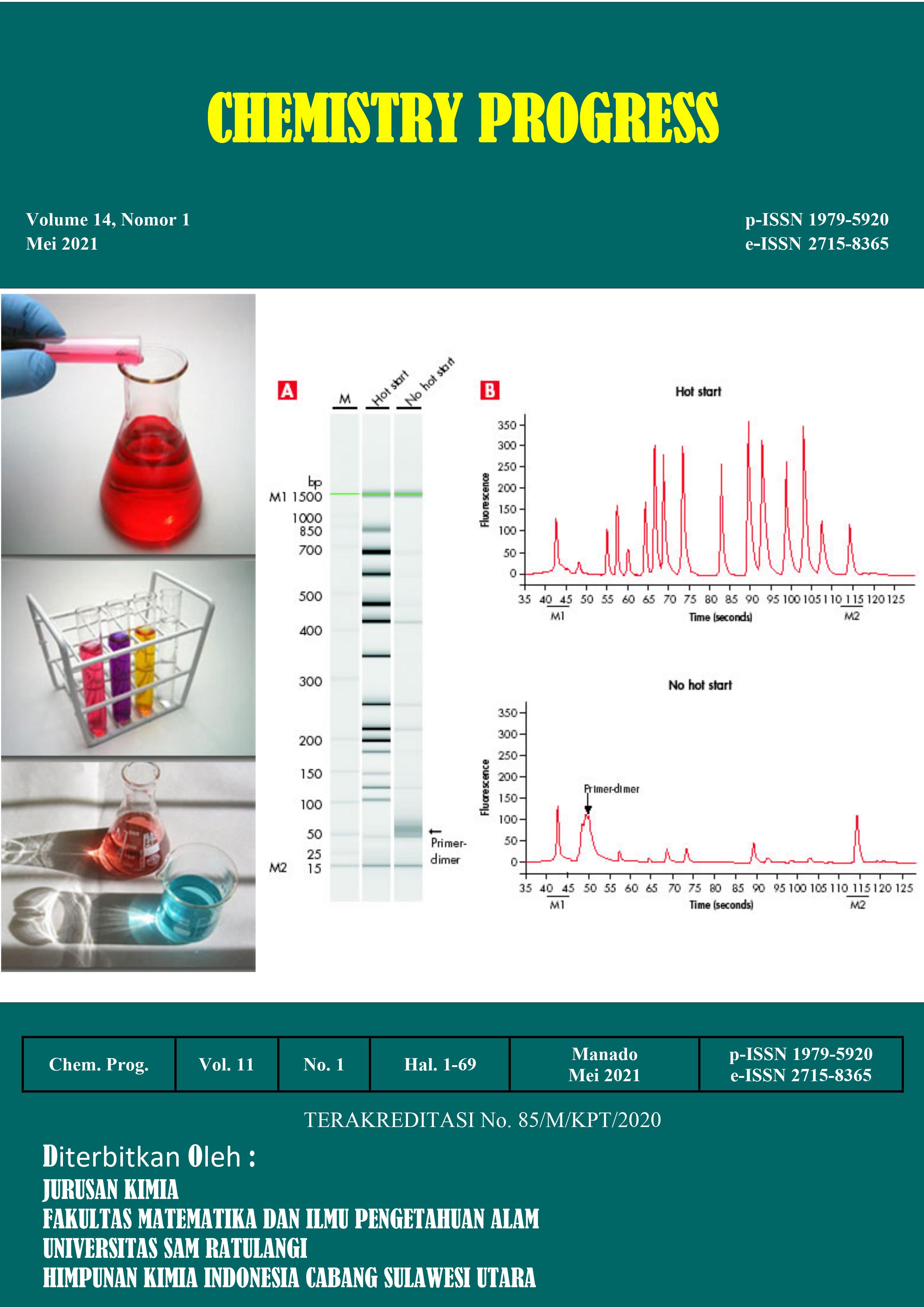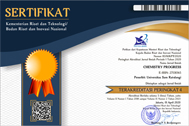SINTESIS NANOPARTIKEL Fe3O4–POLIETILEN GLIKOL (PEG) 6000 DARI PASIR BESI PANTAI HAIS SEBAGAI ADSORBEN LOGAM KADMIUM (Cd)
DOI:
https://doi.org/10.35799/cp.14.2.2021.37192Keywords:
Fe3O4-PEG 6000, adsorpsi, kopresipitasi, nanopartikel, logam CdAbstract
Telah dilakukan penelitian tentang sintesis nanopartikel Fe3O4 dari pasir besi pantai Hais dengan metode kopresipitasi dan digunakan sebagai adsorben logam kadmium (Cd). Dalam sintesis nanopartikel tersebut digunakan polietilen glikol (PEG) 6000 sebagai agen penstabil ukuran partikel. Nanopartikel yang dihasilkan dikarakterisasi menggunakan X-Ray diffractometry (XRD) dan Scanning electron microscope (SEM) dan hasil penelitian menunjukkan bahwa dengan penambahan PEG 6000 dapat mempengaruhi ukuran partikel Fe3O4 yang dihasilkan. Selanjutnya nanopartikel Fe3O4-PEG 6000 dianalisis kemampuannya sebagai adsorben logam Cd menggunakan spektofotometer serapan atom (AAS). Hasil penelitian menunjukkan bahwa kemampuan nanopartikel Fe3O4-PEG 6000 dalam menyerap logam Cd lebih baik jika dibandingkan dengan nanopartikel Fe3O4 tanpa penambahan PEG 6000.
ABSTRACKÂA research has been carried out on the synthesis of Fe3O4 nanoparticles from the iron sand of Hais beach using the coprecipitation method and the material was used as an adsorbent for Cadmium (Cd) metal. In the synthesis of these nanoparticles, polyethylene glycol (PEG) 6000 was used as a particle size stabilizer. The resulting nanoparticles were characterized using X-Ray diffractometry (XRD) and Scanning electron microscope (SEM) and the results showed that the addition of PEG 6000 could affect the particle size of Fe3O4 produced. Furthermore, Fe3O4-PEG 6000 nanoparticles were analyzed for their ability to adsorb Cd2+ ion using Atomic adsorption spectroscopy (AAS). The results showed that the ability of Fe3O4-PEG 6000 nanoparticles to adsorb Cd2+ ion was better than that of Fe3O4 nanoparticles without the addition of PEG 6000.













